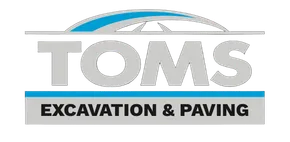FAQs
Tom's Excavations LLC
What steps do you take to minimize environmental impact?
At Tom's Excavations LLC, we implement several measures to reduce our environmental footprint. These include employing sediment control techniques, limiting vegetation disturbance, utilizing low-emission equipment, and adhering to local environmental regulations. We place a high priority on safeguarding nearby water bodies and wildlife habitats, striving to balance project success with responsible stewardship of Southampton's natural resources.How far in advance should I schedule commercial excavation services?
For optimal planning and execution, we recommend scheduling commercial excavation services several weeks to months ahead. This advance notice allows Tom's Excavations to conduct thorough site evaluations, ensure regulatory compliance, and allocate resources effectively. Early planning facilitates a smooth project initiation and timely completion, accounting for factors such as equipment availability, permit processes, and necessary site preparations.How do you handle environmental regulations and permits for site preparation projects?
Tom's Excavations collaborates closely with Southampton municipal agencies to navigate environmental regulations and secure necessary permits for site preparation projects. We conduct required environmental assessments and implement erosion control measures to ensure compliance with local zoning, stormwater management, and environmental protection laws. This approach minimizes ecological impact, avoids legal penalties, and aligns with sustainable practices, providing our customers with peace of mind and more predictable project timelines.How long does commercial site preparation and grading typically take?
The duration of commercial site preparation and grading projects varies based on several factors, including site size, soil conditions, weather, and the scope of work. Smaller projects may be completed in a few days, while larger commercial sites could require several weeks. At Tom's Excavations, we conduct detailed project planning and provide realistic timelines based on these variables. Our careful scheduling helps minimize disruptions and allows for adjustments due to weather or unforeseen challenges, ensuring your project stays on track.Can site preparation help with flood prevention or mitigation?
Indeed, proper site preparation plays a crucial role in flood prevention and mitigation. At Tom's Excavations, we design sites with appropriate slopes, retention basins, swales, or drainage channels tailored to local rainfall patterns. We also focus on stabilizing soil and installing erosion control measures to protect both the site and neighboring properties. This thoughtful approach to site preparation not only reduces flood risks but can also enhance property value by ensuring long-term resilience against water damage.How do you address unexpected underground obstacles during site prep?
Tom's Excavations takes a proactive approach to managing unexpected underground obstacles. We begin with comprehensive pre-construction surveys, including utility locates and test pits. When surprises do occur, such as buried debris or old foundations, we promptly communicate potential solutions to our customers. These may include removal, rerouting, or redesign options that minimize impact on project timelines. Our extensive experience in Southampton allows us to anticipate and efficiently address common site issues, ensuring cost-effective problem-solving.What are common misconceptions about site grading in commercial construction?
Two prevalent misconceptions about site grading in commercial construction are that it's simply a matter of leveling ground and that cheaper or rushed grading is sufficient. In reality, grading is a precise engineering process that considers drainage, soil compaction, environmental factors, and building requirements. At Tom's Excavations, we educate our customers on the importance of professional grading and site preparation as investments in the longevity and safety of their developments, helping to prevent issues like foundation problems, drainage failures, and increased maintenance costs.How do you ensure soil compaction is sufficient for commercial building foundations?
At Tom's Excavations, we employ rigorous methods to ensure adequate soil compaction for commercial building foundations. We conduct compaction testing during and after grading to verify that soil density meets engineering specifications. Our team selects appropriate compaction methods and materials based on specific soil types. This meticulous approach to soil compaction is crucial in preventing foundation cracking, uneven settling, and costly repairs, ultimately supporting the long-term structural integrity of commercial buildings.How do you handle environmental regulations and permits for site preparation projects?
Tom's Excavations maintains a strong focus on regulatory compliance for site preparation projects. We work in close coordination with Southampton municipal agencies to obtain all necessary permits, perform required environmental assessments, and implement effective erosion control measures. This comprehensive approach ensures our work adheres to local zoning, stormwater management, and environmental protection laws. By prioritizing proper permitting and environmental stewardship, we provide our customers with smoother project timelines and protection against potential legal issues.How does grading impact drainage and long-term site performance?
Proper grading is essential for effective drainage and long-term site performance. At Tom's Excavations, we use precise laser-guided equipment to achieve optimal slopes that direct water away from foundations and critical areas, preventing issues like pooling and erosion. Our grading designs take into account local weather patterns and soil permeability to create drainage systems that comply with regulations and protect your investment over time. This careful approach helps prevent water damage, soil instability, and foundation settling, which are crucial for maintaining structural safety and site usability.
